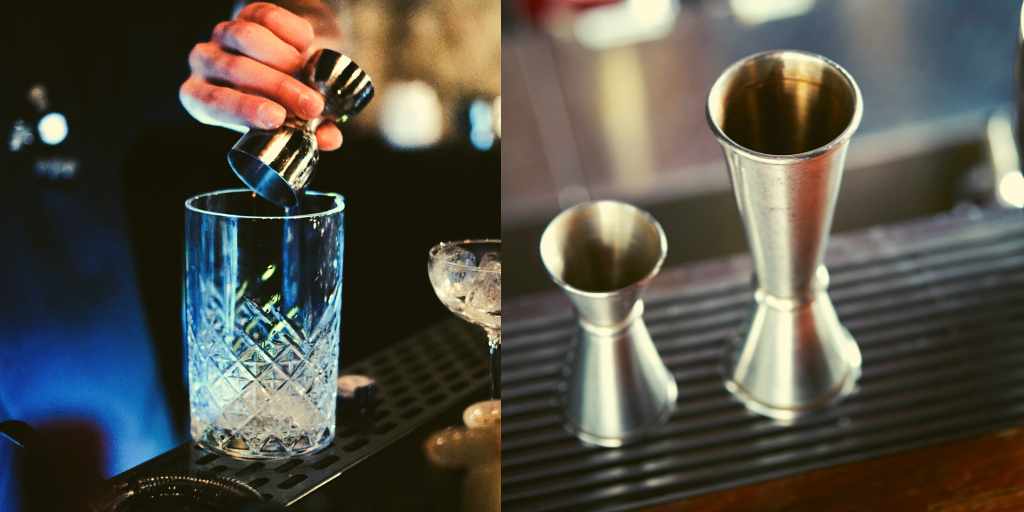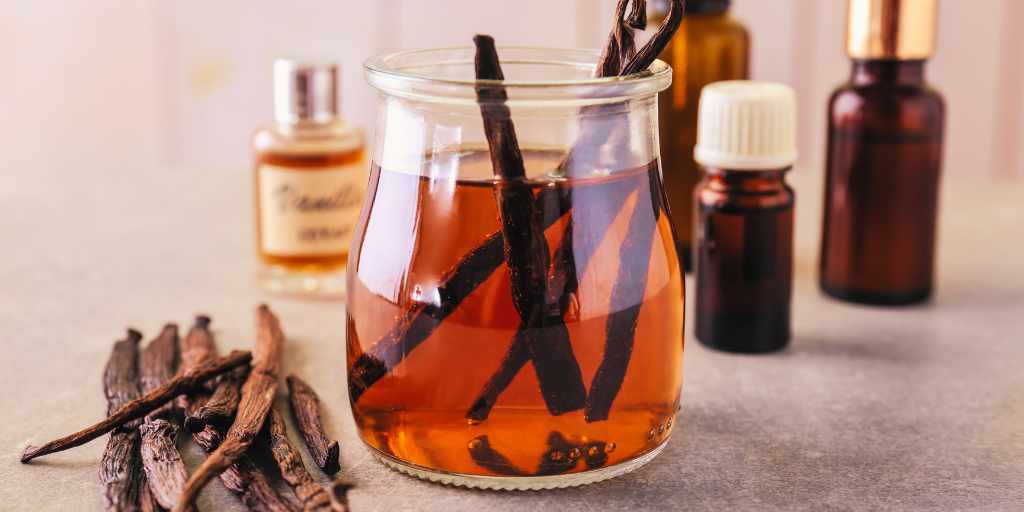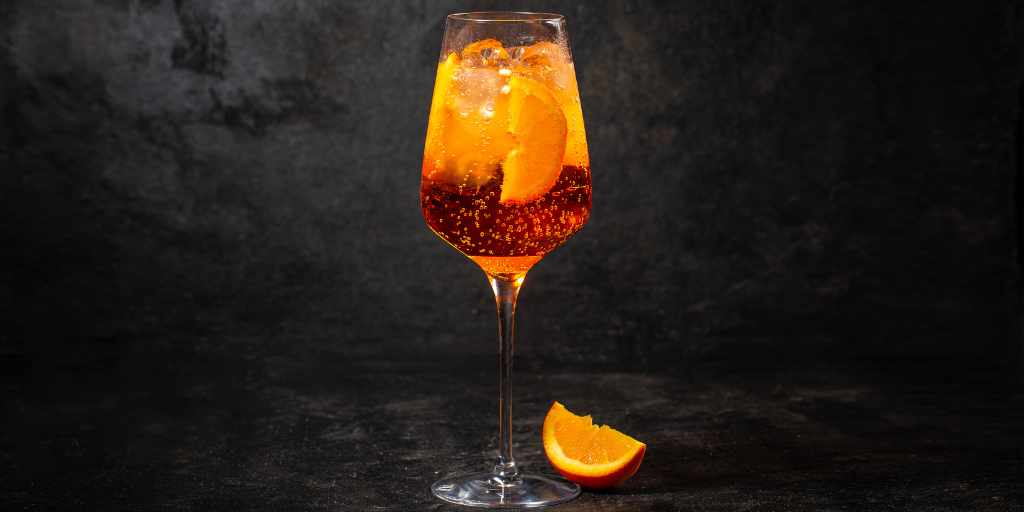Learning to use a jigger is essential if you want to become an expert at making drinks, but what is a jigger used for, and which type of jigger is the best pick for you?
A jigger has several uses; finding the right one for your home bar is essential to mixing and pouring your drinks properly. This article will cover how jiggers are used and how a Japanese jigger compares with a bell jigger.
What Is a Jigger?
A jigger is a tool primarily used for measuring and pouring alcohol, although it can also be used for syrups and other mixes. The Japanese jigger has a long, narrow design intended to reduce the risk of spilling, while the bell jigger has a rounder, goblet-shaped design.
Jiggers have been around for centuries. Historically, navies used jiggers to ration spirits carefully, and over time, the useful hourglass tool found its way into bars around the world for crafting cocktails and cocktail recipes.
People theorize that the world originated from the name of a sail on a four-mast ship or shortened from the American slang ‘thingamajig.’
It might also be called the cocktail measuring cup or double jigger. While many bartenders are starting to reduce their dependency on the jigger with free pouring, it’s still handy for measuring and pouring alcohol. There are three types of jiggers:
- Hourglass Jigger
- Japanese Jigger
- Bell Jigger
Hourglass Jigger
The hourglass jigger is ubiquitous in bars nationwide and easily identifiable by its conical shape. However, its simple design leaves much to be desired, since the lack of a rim makes this tool prone to spilling.
Japanese Jigger
A tall, narrower version of the hourglass jigger, the Japanese jigger is generally considered a more professional option, with less risk of overpouring or overflowing while using. That’s largely thanks to its elongated design, which helps a bartender avoid tipping the alcohol out by mistake.
Sometimes, Japanese jiggers will come with internal markings, allowing for precision, smaller measurements, and a lip to prevent overflowing and overpouring.
Bell Jigger
Like the hourglass jigger, the bell jigger is shorter and rounder, looking much like its namesake. The advantage of bell jiggers is that they usually have a lip around the bowl, allowing the user a little bit more leeway to avoid overflowing or overpouring.
More Jigger Facts to Consider
A standard jigger is 1.5 ounces (for a “standard pour“), or 44 ml in the taller half, while the shorter bowl holds 1 ounce or 30 ml. If yours has internal markings, this can help measure when pouring.
The smaller vessel will almost always be half the size of the larger, taller one, allowing for quick and easy relative measurements.
The bell and Japanese jigger are a little heavier, which isn’t bad. Too light (like an hourglass jigger), and you risk sloshing the alcohol in the jigger.
Using a Jigger
Thankfully, when it comes to using a jigger, it doesn’t matter what type you have. The methodology to craft a masterful drink remains constant.
To start, pinch the jigger between your index and middle finger (some prefer the middle and ring), palm facing down.
Hold the jigger next to the rim of the glass you’re pouring into and fill it with your liquid of choice. The hardest part of using a jigger is not overpouring, so pour gently to avoid spilling or sloshing. Ideally, yours has internal markings that make filling accurately easier.
Once you’ve filled the jigger, tilt the finger closest to the glass to rotate the jigger and pour it into the glass.
Of course, it’ll take some practice to attain mastery with the jigger, but once you get the hang of it, you’ll pour like a pro. After each use, remember to wash the jigger thoroughly—you don’t want to mix flavours unintentionally! You can usually find dishwasher safe tools if you’re in a rush.
Which Jigger Is Right for You?
Different jiggers have their pros and cons, but it’s important to set aside the pretentiousness that can often plague the barkeeping industry: any jigger will get the job done if you know what you’re doing, and technique is the most valuable skill to train before you blame your jigger for a bad pour.
That said, there are advantages to using one over the other.
The hourglass jigger is basic—which is about all there is to say about it. It’ll get the job done and provide accurate measurements for pouring.
The only major disadvantage is that it’s usually lighter than its two counterparts. As such, you’ll always want to keep the jigger carefully balanced while using it to avoid overpouring or spilling. Try to find one with internal markings if you can.
The Japanese jigger is the clear winner regarding ease of use. The standard pinch method of holding a jigger makes it ideal to use, and it’s certainly more comfortable to grip than a bell jigger.
In addition, Japanese jiggers generally come equipped with additional measurement marks for even more precise pours. The narrow, tall design makes it impractical and slightly frustrating for syrups and liquors.
A practised hand, of course, can handle it easily, but note that there is a learning curve.
Lastly, the bell jigger is an all-around good option that you can use for just about anything. The rimmed lip makes it beginner-friendly, and the wide, goblet-shaped bowl helps avoid the one glaring problem most beginner cocktail mixers have: overpouring. Many have internal markings, making accurate pouring easier. For these reasons, it’s found an audience with professionals and cocktail enthusiasts around the world
Even pouring is an important part of using a jigger; bell jiggers make steady pouring accessible for beginners.
However, bell jiggers may prove difficult if you don’t have dexterous fingers. It is the hardest to pinch with its rounded shape and dimensions, although by no means inaccessible.
Final Thoughts
Three main types of jiggers are used worldwide for measuring and pouring drinks. Whichever jigger you choose, whether Bell jiggers or Japanese jiggers the key is to stick with it, follow some recipes, and brush up on some tutorials.
Doing so will help you visualise the method and set you well on becoming a master bartender, at your home bar or out on the job.






